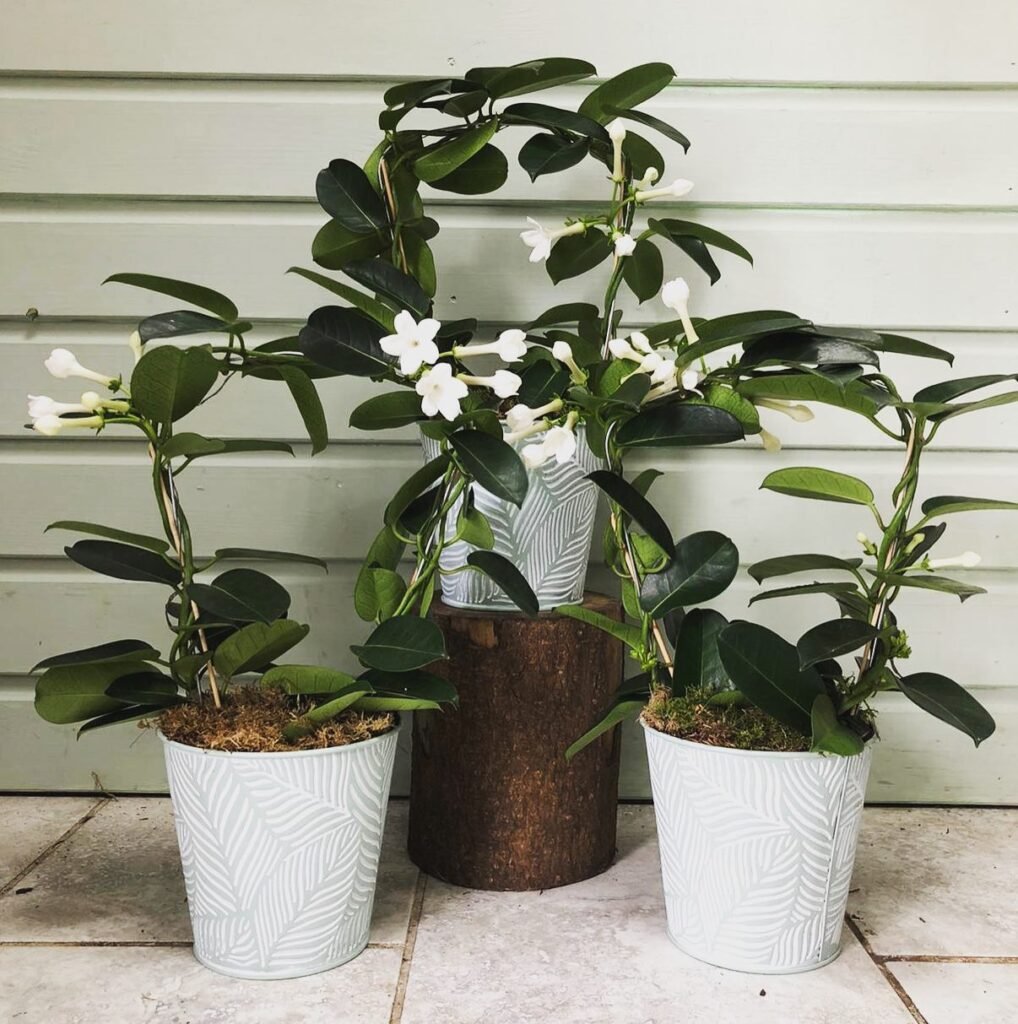Are you ready to bring a touch of the tropics to your UK garden? Look no further than Stephanotis floribunda, also known as Madagascar Jasmine. This beautiful tropical plant is prized for its fragrant white flowers and is the perfect addition to any garden or as an ornamental plant. But how do you care for this exotic climber in the UK climate? Let me share with you expert tips and techniques to ensure your Stephanotis floribunda thrives in our British weather.
Appearance of Stephanotis floribunda

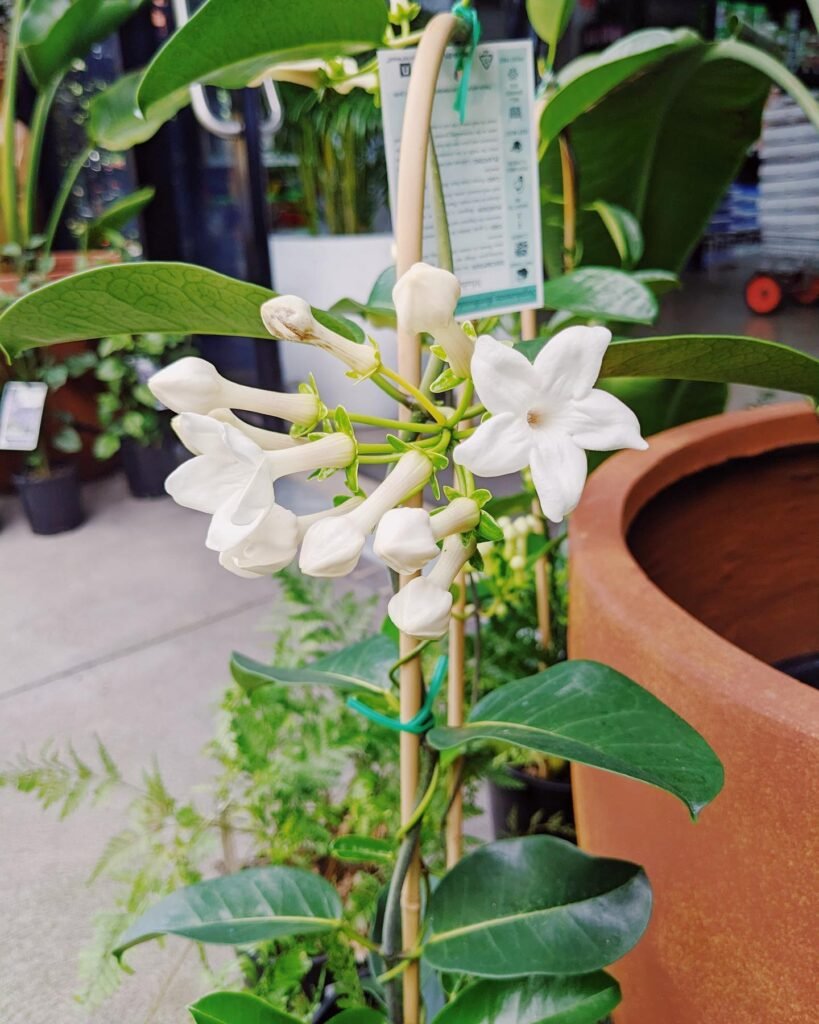
Stephanotis floribunda, also known as Madagascar Jasmine, is a tropical plant that is revered for its stunning appearance. With its glossy, dark green leaves, this plant adds a touch of elegance to any space. But that’s not all – it’s the exquisite white flowers that steal the show. These flowers have a delicate star-like shape and emit a mesmerizing jasmine scent that fills the air with fragrance. Each bloom is adorned with a crown of stamens, adding an extra layer of beauty to this already breathtaking plant. Stephanotis floribunda is a vine-like plant that can be trained to climb trellises or wire hoops, making it a versatile addition to your garden or indoor space.
 Did you know the Stephanotis floribunda vine can grow up to 6 metres or even more in length? This remarkable climber uses its tendrils to grasp and climb, enabling it to reach towards the sunlight in dense tropical forests.
Did you know the Stephanotis floribunda vine can grow up to 6 metres or even more in length? This remarkable climber uses its tendrils to grasp and climb, enabling it to reach towards the sunlight in dense tropical forests.
Light Requirements for Madagascar Jasmine

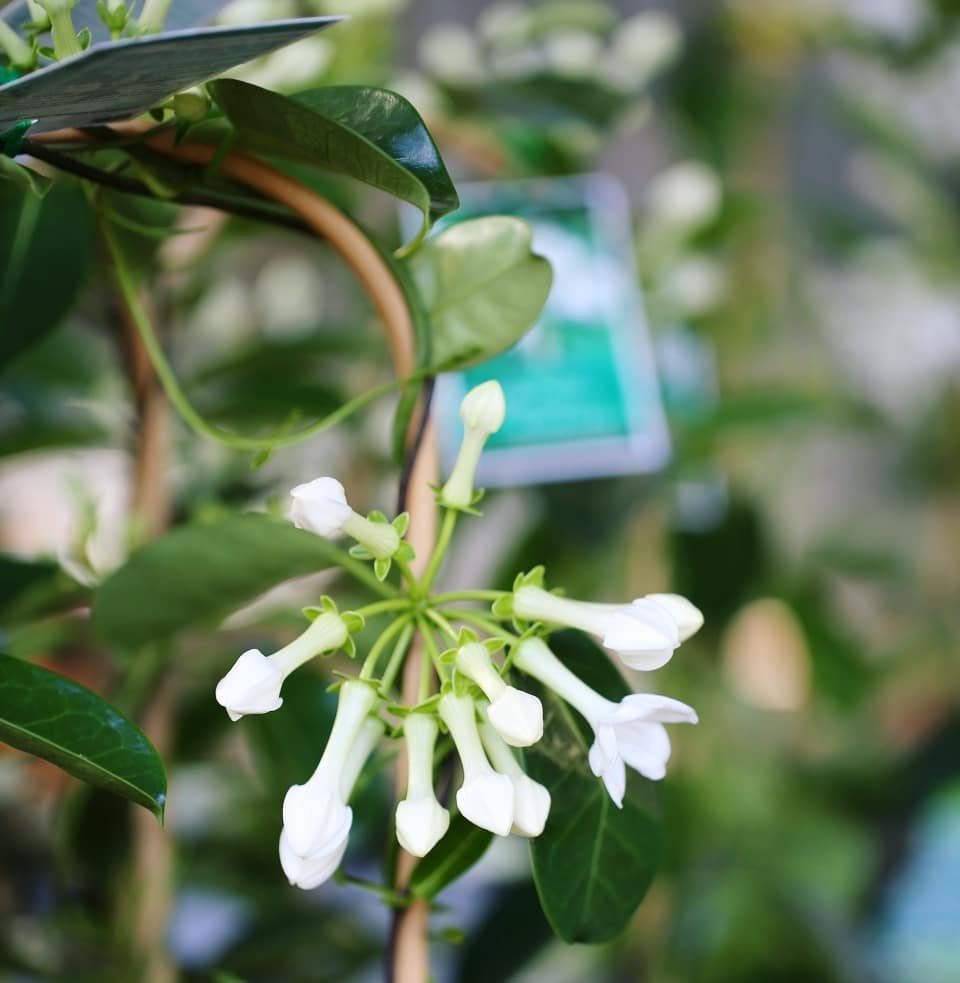
Stephanotis floribunda, also known as Madagascar Jasmine, requires specific light conditions to thrive. It needs bright, filtered light to ensure optimal growth and development of its beautiful flowers. However, direct sunlight should be avoided as it can cause damage to the delicate foliage.
To provide the ideal light environment for the Stephanotis floribunda, it is recommended to place the plant in a bright location that receives good natural light. A north-facing window is an excellent choice as it provides gentle, indirect light throughout the day. Additionally, a bright spot in a conservatory, kitchen, or bathroom can also be suitable for this tropical beauty.

Watering Tips for Stephanotis floribunda
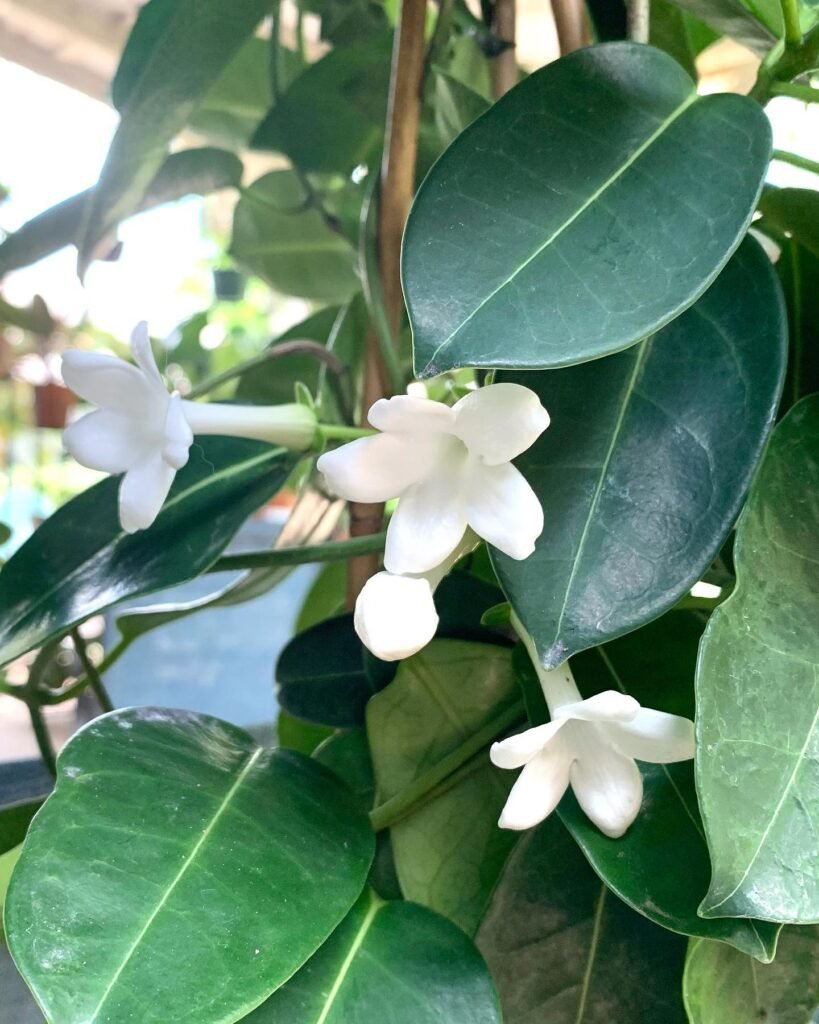
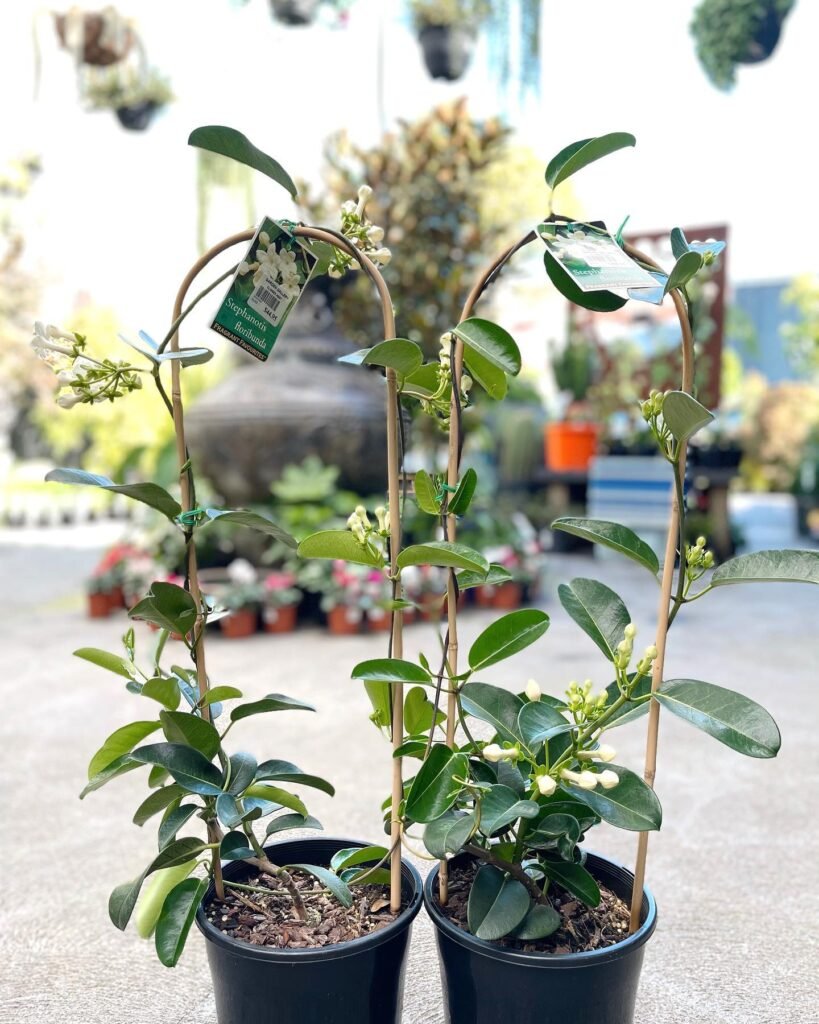
Proper watering is crucial for the health and vitality of Stephanotis floribunda. Here are some essential watering tips to keep your Madagascar Jasmine thriving:
- Monitor Moisture Levels: Check the compost regularly and water as soon as it feels dry to the touch. Stephanotis floribunda prefers consistently moist soil, so it’s important to keep an eye on its moisture levels.
- Avoid Waterlogging: While maintaining moisture is important, be careful not to overwater or let the soil become waterlogged. Excessive moisture can lead to root rot and other issues. Ensure that the plant’s container has sufficient drainage holes and that excess water can easily escape.
- Embrace Humidity: Stephanotis floribunda thrives in humid environments. To meet its humidity needs, mist the foliage with tepid water every few days. You can also place the plant on a tray filled with moist pebbles to create a humid microclimate around it.
- Allow for Partial Drying: Although the plant prefers consistent moisture, it’s essential to let the top portion of the soil dry out between waterings. This allows for healthy root development and helps prevent fungal diseases. Always check the soil moisture before watering again.
- Consider Watering Frequency: The watering frequency will vary depending on factors such as the temperature, humidity, and the size of the plant and its container. As a general guideline, aim to water Stephanotis floribunda every 1-2 weeks, adjusting as needed based on the plant’s specific requirements.

Fertilizing and Soil for Madagascar Jasmine
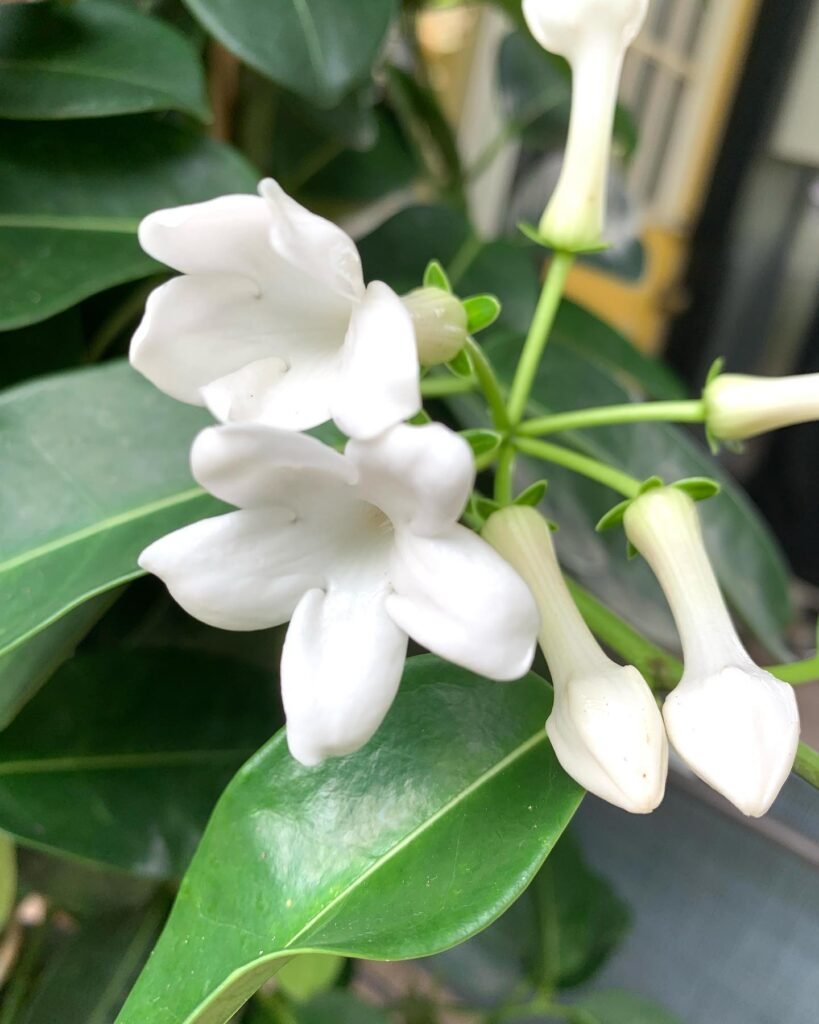
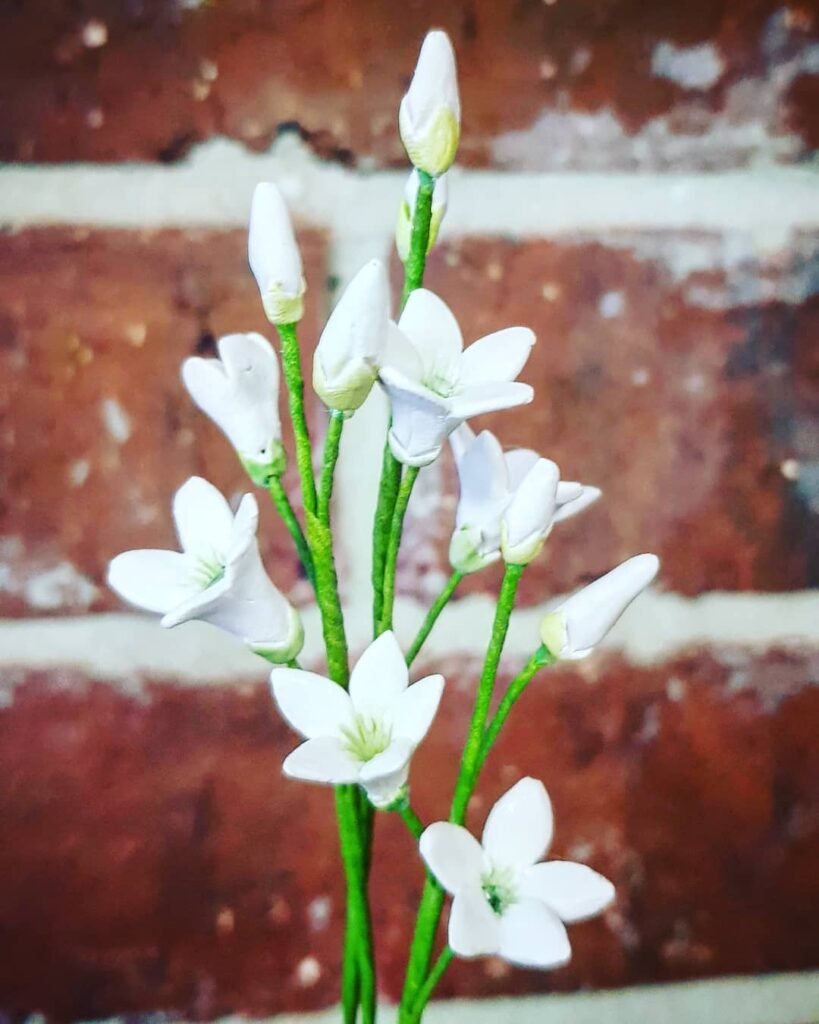
Stephanotis floribunda, also known as Madagascar Jasmine, benefits greatly from proper fertilization and ideal soil conditions. By providing the right nutrients and a well-drained growing medium, you can ensure the healthy growth and vibrant blooms of this beautiful tropical plant.
Fertilizing your Madagascar Jasmine
To promote optimal growth, it is recommended to fertilize Stephanotis floribunda with a potassium-rich liquid feed. A suitable option for this is tomato food, which is readily available and provides the necessary nutrients for the plant’s development. Fertilizing fortnightly, starting from spring and continuing until late summer, will help sustain the plant’s growth and encourage abundant flowering.
Choosing the right soil for your Madagascar Jasmine
The soil in which you grow Madagascar Jasmine plays a crucial role in its overall health and well-being. It is recommended to use a soil-based compost, such as peat-free John Innes No.2, which offers a balanced mix of organic matter and nutrients. This type of compost provides the necessary drainage while retaining enough moisture for the roots to thrive.
When repotting your Stephanotis floribunda, ensure that you use the appropriate compost mix to maintain the plant’s vigor. Additionally, regularly check the moisture levels in the soil and adjust watering accordingly to prevent waterlogging or drying out.
Note: Remember to follow the manufacturer’s instructions when using fertilizers, and always wear protective gloves and eyewear.

Pruning and Maintenance for Stephanotis floribunda

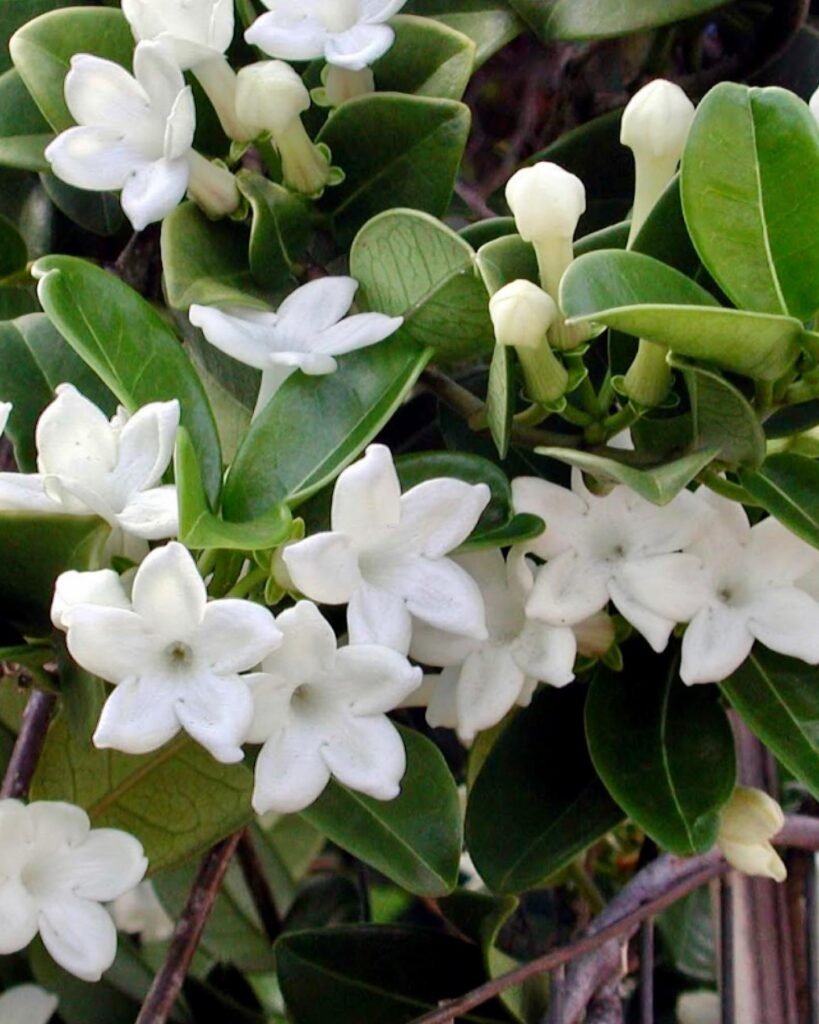
To ensure the health and beauty of your Stephanotis floribunda, regular pruning and maintenance are essential. Here are some tips on how to properly care for this tropical plant in the UK:
- Light pruning in spring: If needed, lightly prune your Stephanotis floribunda in spring to maintain its shape and size. Trim back any overgrown or damaged stems, ensuring a tidy appearance for your plant.
- Support for climbing: As Stephanotis floribunda grows, it requires support to climb and flourish. Gently tie the stems to a trellis or other suitable support using garden twine. This will encourage upward growth and help maintain an attractive form.
- Trimming as needed: Throughout the year, keep an eye on your Stephanotis floribunda and trim any wayward or excessively long stems. Regular trimming will help the plant maintain its desired shape and prevent it from becoming unruly.
- Cool spot for optimal growth: Stephanotis floribunda thrives in a cool spot with temperatures ranging from 15-21°C (59-70°F). Avoid placing the plant in direct sunlight or near sources of heat, as this can cause wilting and damage to the foliage.
- Reduced watering in winter: During the winter months, reduce the frequency of watering to allow for a period of dormancy. Water the Stephanotis floribunda only when the top inch of soil feels dry to the touch. This will prevent waterlogged roots and ensure healthy growth.

Propagating Stephanotis floribunda (Madagascar Jasmine)


If you want to propagate Stephanotis floribunda, also known as Madagascar Jasmine, you have two options: cuttings or seeds.
- Cuttings: To propagate through cuttings, choose sturdy stems in spring. Cut a 4-6 inch section below a leaf node. Remove the lower leaves, leaving only a few at the top for photosynthesis.
- Rooting: Prepare a mixture of peat-free compost and horticultural sand or perlite. Moisten the mixture and insert the cuttings about 2 inches deep. Make sure the leaves are above the soil. Place the container in a warm and bright location.
- Potting: Once the cuttings have rooted, which usually takes 4-6 weeks, you can pot them into a suitable compost mix. Choose a well-draining soil-based compost, such as peat-free John Innes No.2, to provide the necessary nutrients for healthy growth.
If you prefer to propagate Stephanotis floribunda from seeds, you can save them from the plant or purchase them from a seed supplier. Plant the seeds in a small pot filled with a peat-free compost mixture. Keep the soil moist, but not waterlogged, and place the pot in a warm and bright location.
Whether you choose cuttings or seeds, the key to successful propagation is to provide the right conditions for rooting or germination. With patience and proper care, you can multiply your Stephanotis floribunda collection and enjoy the beauty of these exquisite flowers.

Repotting Tips for Stephanotis floribunda
When it comes to caring for your Stephanotis floribunda, repotting is an essential task to ensure its continued growth and health. Here are some top tips for successful repotting:
- Timing: Repot your Stephanotis floribunda every other year in the spring. This is the optimal time when the plant is actively growing and can quickly recover from the transplant.
- Pot size: When repotting, choose a pot that is slightly larger than the current one. Gradually increase the pot size over time to provide sufficient room for the plant’s roots to grow.
- Soil-based compost: Use a soil-based compost, such as peat-free John Innes No.2, which provides the necessary nutrients and drainage for the plant. This type of compost promotes healthy root development and overall growth.
If your Stephanotis floribunda has become too large to repot, there’s no need to worry. Simply scrape away the top layer of compost and replace it with fresh soil-based compost. This will refresh the nutrients available to the plant without disturbing its root system.
 Did you know Stephanotis floribunda, also known as Madagascar Jasmine, is especially attractive to night-time pollinators? Its fragrant, white flowers are designed to lure in moths after sunset, showcasing a unique nocturnal pollination strategy.
Did you know Stephanotis floribunda, also known as Madagascar Jasmine, is especially attractive to night-time pollinators? Its fragrant, white flowers are designed to lure in moths after sunset, showcasing a unique nocturnal pollination strategy.
Where to buy Stephanotis floribunda in the UK
If you’re looking to add the beautiful Stephanotis floribunda, also known as Madagascar Jasmine, to your garden, there are several options available in the UK. You can find this tropical plant at local garden centres or conveniently purchase it from trusted online retailers.
Some recommended sources for buying Stephanotis floribunda include Primrose, Thompson & Morgan, and Crocus. These retailers offer a wide selection of plants, including Stephanotis floribunda, and provide reliable service and delivery.
When purchasing your Stephanotis floribunda, it’s important to thoroughly inspect the plants for any signs of damage or disease. Look for healthy leaves and sturdy stems to ensure the best quality plant for your garden.
Helpful Videos about Stephanotis floribunda (Madagascar Jasmine)
Check out these great videos I found on looking after Stephanotis floribunda, or Madagascar Jasmine as most people know it. They offer simple tips that make taking care of this plant really easy. Perfect for anyone new to gardening!
- How to get Madagascar Jasmine to bloom | Stefanotis FULL CARE GUIDE
FAQ about Stephanotis floribunda (Madagascar Jasmine)

Curious about the best ways to look after your Stephanotis floribunda, or Madagascar Jasmine? You’re in the right place! I’ve collected all the crucial questions to guide you through caring for your plant with simplicity. From nailing the perfect watering schedule to tackling common issues, you’re in good hands.
Stephanotis floribunda, known as Madagascar Jasmine, is a vine plant native to Madagascar. It’s cherished for its glossy green leaves and highly fragrant, white flowers. The nickname “Jasmine” comes from its jasmine-like scent, although it’s not a true jasmine.
In the UK, Madagascar Jasmine is best grown as a houseplant or in a greenhouse. It can be placed outside in a sheltered, sunny spot during the warmer months but must be brought indoors before temperatures drop below 10°C.
Use a well-draining, peat-based potting mix. Adding perlite or vermiculite can improve drainage, vital for avoiding root rot.
Water when the top inch of soil feels dry. Stephanotis floribunda prefers consistent moisture but dislikes waterlogged soil. Reduce watering in the winter.
Yes, feed every two weeks with a balanced, water-soluble fertiliser from spring to autumn. Do not feed in winter when growth slows.
Bright, indirect light is best. Too much direct sunlight can scorch the leaves, while too little light inhibits flowering.
Ensure it gets enough light, keep the plant slightly pot-bound, and provide a rest period in winter with cooler temperatures (around 13-15°C) to encourage spring blooms.
Yellow leaves can result from overwatering, underwatering, or lack of nutrients. Check the soil moisture and adjust your watering schedule or fertiliser application accordingly.
Yes, pruning in early spring can help maintain shape and encourage bushier growth. Avoid heavy pruning as it can reduce flowering.
Repot in spring every 2-3 years or when the plant becomes root-bound. Choose a pot only slightly larger than the previous one to keep it comfortable.
Watch out for common pests like spider mites, mealybugs, and aphids. Treat infestations with insecticidal soap or neem oil.
Lack of flowers can be due to insufficient light, too much nitrogen, or the plant needing a cooler rest period in winter.
Place the pot on a tray of wet pebbles or mist the plant regularly, especially in dry, indoor environments.
Yes, stem cuttings taken in spring or early summer can root in moist soil. Use a rooting hormone and cover with a plastic bag to retain humidity.
Brown tips can indicate low humidity or inconsistent watering. Increase humidity around the plant and ensure a regular watering schedule.
Root rot, often due to overwatering, requires you to remove the plant from its pot, cut away any soft, brown roots, and repot in fresh, well-draining soil.
It prefers temperatures between 18-24°C during the day and slightly cooler at night, but it should not be exposed to temperatures below 10°C.
Yes, it’s a natural climber. Provide a trellis or support for it to climb on, which also helps encourage flowering.
This is likely honeydew, excreted by aphids or other pests. Treat the plant for pests and wipe leaves with a damp cloth to remove the sticky residue.
Stephanotis floribunda is considered non-toxic to cats and dogs, but ingesting parts of the plant can still cause gastrointestinal upset. It’s always best to keep plants out of reach of curious pets.
I hope this FAQ has helped you understand how to care for your Stephanotis floribunda, or Madagascar Jasmine. If you’ve got more questions, just leave them in the comments. I’m here to help you out. Remember, we all start as beginners in gardening, and there’s always something new to learn as you and your plant grow together.

